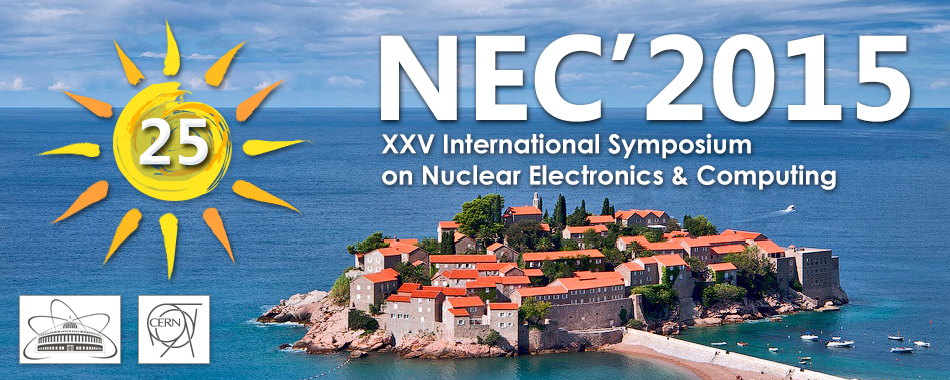Speaker
Needa Asbah
(DESY, Hamburg, Germany)
Description
The trigger system of the ATLAS experiment is designed to reduce the
event rate from the LHC nominal bunch crossing at 40 MHz to about 1
kHz, at the design luminosity of 10^34 cm^-2 s-1. After a successful
period of data taking from 2010 to early 2013, the LHC is restarting
in 2015 with much higher instantaneous luminosity and this will
increase the load on High Level Trigger system, the second stage of
the selection based on software algorithms. More sophisticated
algorithms will be needed to achieve higher background rejection
while maintaining good efficiency for interesting physics signals.
The Fast TracKer is part of the ATLAS trigger upgrade project; it is
a hardware processor that will provide, at every level-1 accept (100
kHz) and within 100 microseconds, full tracking information for
tracks with momentum as low as 1 GeV/c. Providing fast extensive
access to tracking information, with resolution comparable to the
offline reconstruction, the Fast Tracker will for example help the
High Level Trigger system in the precise detection of the primary
and secondary vertices, to ensure robust selections and improve the
trigger performance.
The Fast TracKer will exploit hardware technologies with massive
parallelism, combining Associative Memory ASICs, FPGAs and high
speed communication links.
We present the architecture of the FTK system, the results from
integration tests and discuss the expected physics performance in
the harsh environment of high pile-up and high luminosities expected
for upcoming LHC run-2.
Author
Needa Asbah
(DESY, Hamburg, Germany)

